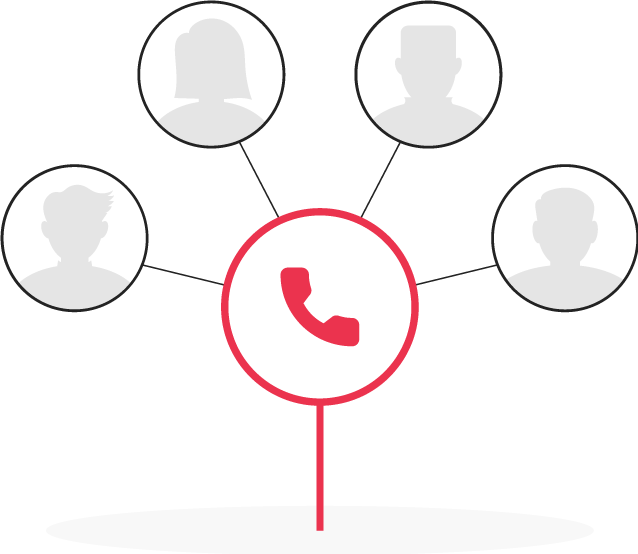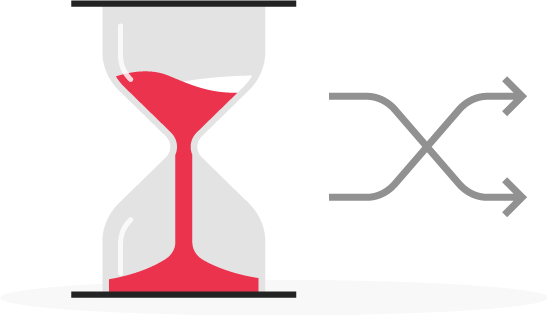Types of call distribution
All distribution methods have their own pros and cons. Speed might be more important for some, while productivity is the key issue for others. If you need to fix these issues in your business, choose a routing strategy that will work best for you.
Rotary call distribution
Rotational distribution is a common approach for distributing the work of an organization's agents. For example, agent 1 takes call 1, agent 2 then handles call 2, and so on until everyone has participated in taking calls. Then the cycle repeats from agent 1 again.
Fixed order call distribution
In this type, the order of agents is pre-established and calls are initially distributed to just the first person on the list. Calls only go to next agent if previous one is busy. This type is good for companies with experienced agents who can resolve matters faster than others.
Simultaneous call distribution
The best routing strategy is when the automatic call distributor (ACD) alerts all agents simultaneously. The first agent who answers will handle the customer.

Talk-time call distribution
If it isn't possible to take breaks, the ACD can set a "talk-time distribution" so that each agent has met their work requirements by the end of these shifts. The system selects an agent with the least amount of talk time and sends them the next call in queue.
Skills-based routing
Skills-based routing is a term for the approach that prioritizes an agent by their score.
- fluency in language
- efficiency
- expertise
These are just a few examples of the different priorities you'll need to consider before assigning skill levels. For example, if one task is more important than others then only assign skilled agents to that task and award higher ratings when needed. This strategy helps ensure callers will be routed directly to the agent with specific skills they're looking for based on their ratings.

Time-based call distribution
Time-based distribution takes into account the availability of your team members. The ACD will ring agents only if they're available to take that call, and if none are open, it will go straight to voicemail for processing later. If you don't want incoming calls being taken during hours when no one is on staff, then this is a good.
Call Center Overflow Tools
Calls quickly overflow a call center when there are not enough agents to handle the inbound phone calls. This frustration will lead customers to hang up, or never reach an agent if they have voicemail set up.
Choose between sending them to a pre-recorded message or setting up an automatic callback for those who remain on hold too long.
Voicemail
It also allows customers to leave a recorded message for our agents. The agent will then assess the issue and try to resolve it, or call the customer back with an update.
Automatic Call Back
Once the agent is available, they can make an automatic phone call to the customer.
Call Monitoring
Quality management is important to maintain the high standards of your team. One way to do this is by call monitoring. This allows a supervisor to listen in your calls, providing support where necessary.
These sessions can also be used for coaching as it grants the supervisor a real-time view on how the agent deals with customers. They can then give the agent advice on how to improve their performance.

